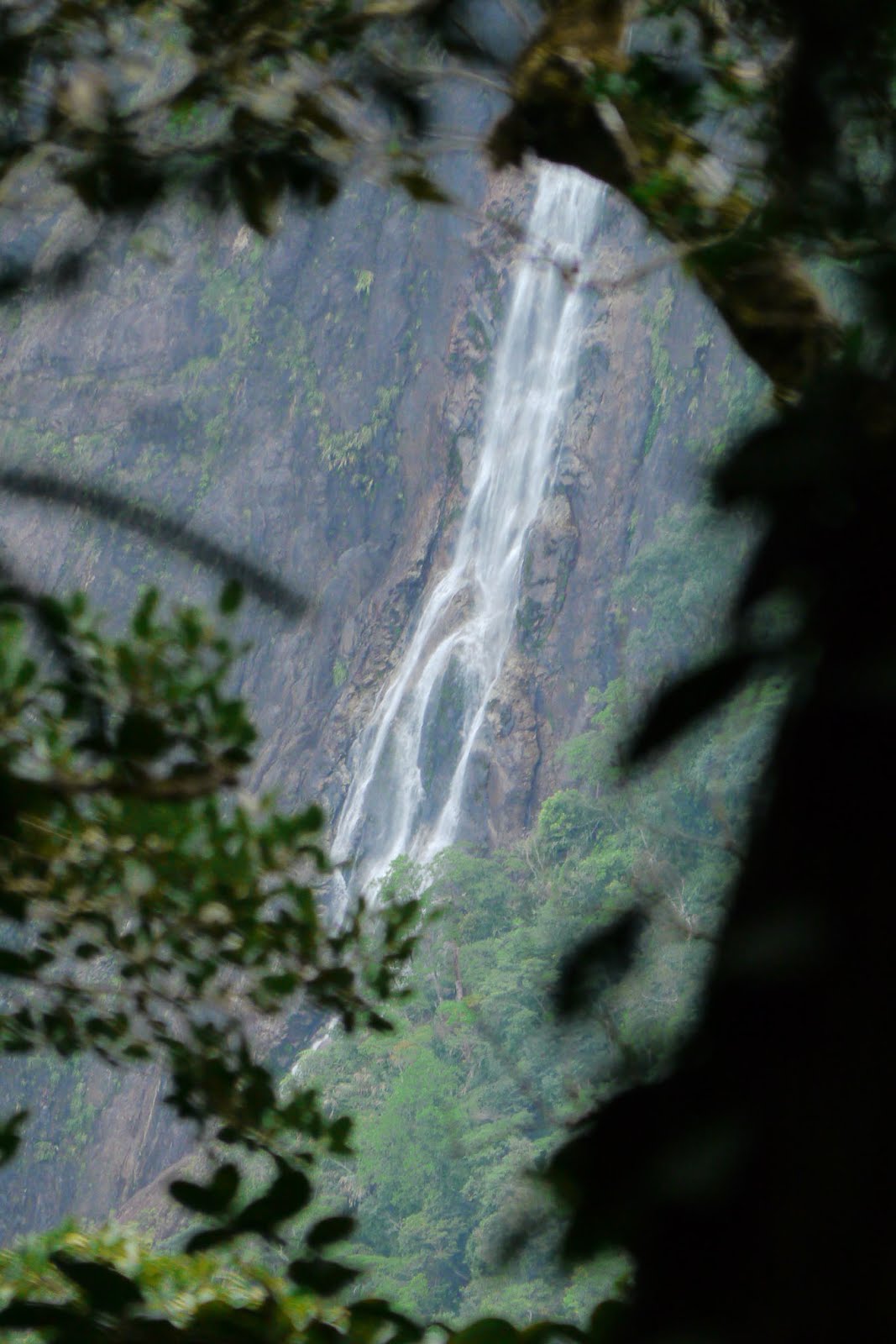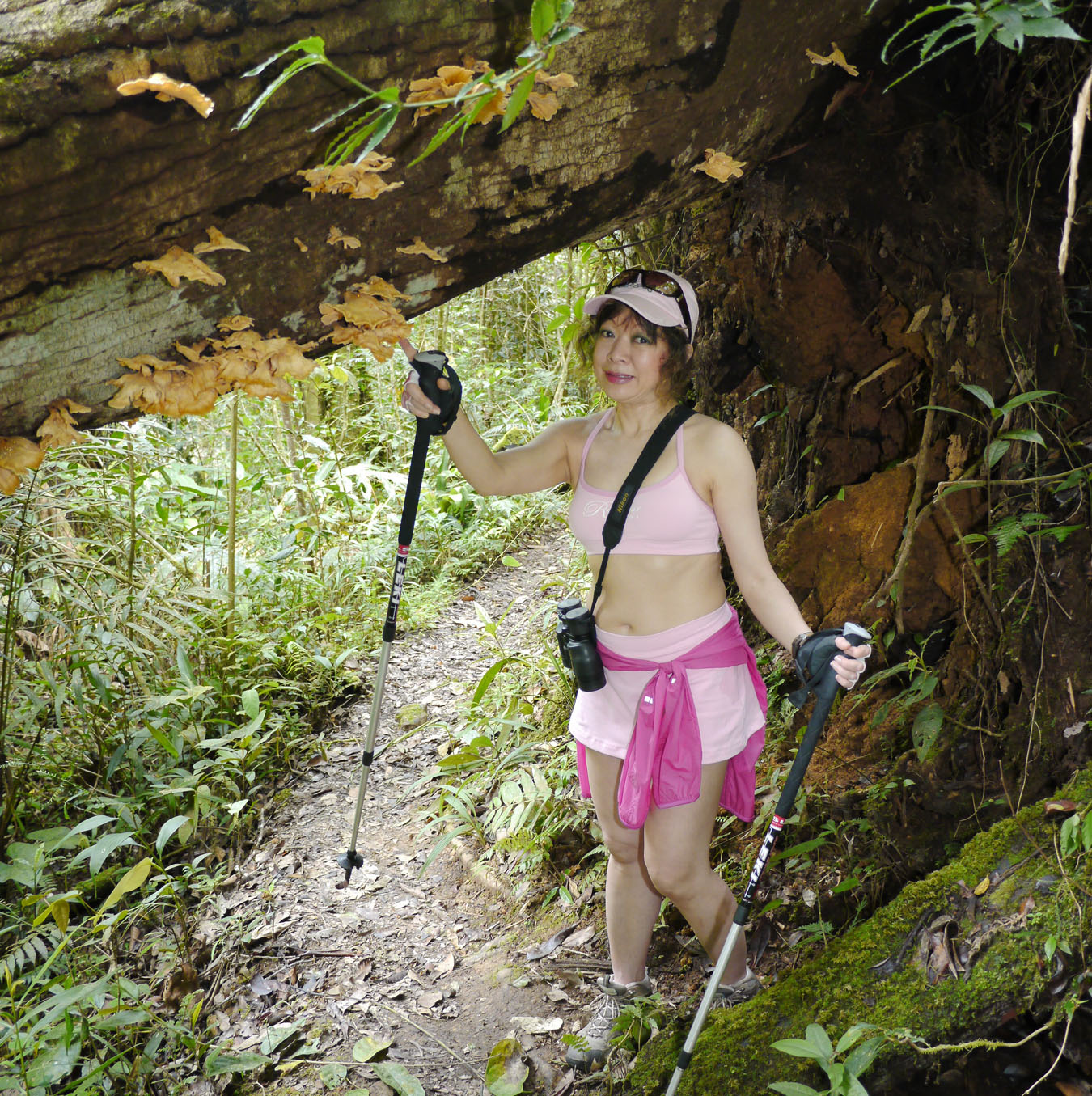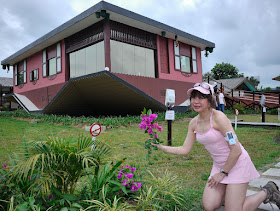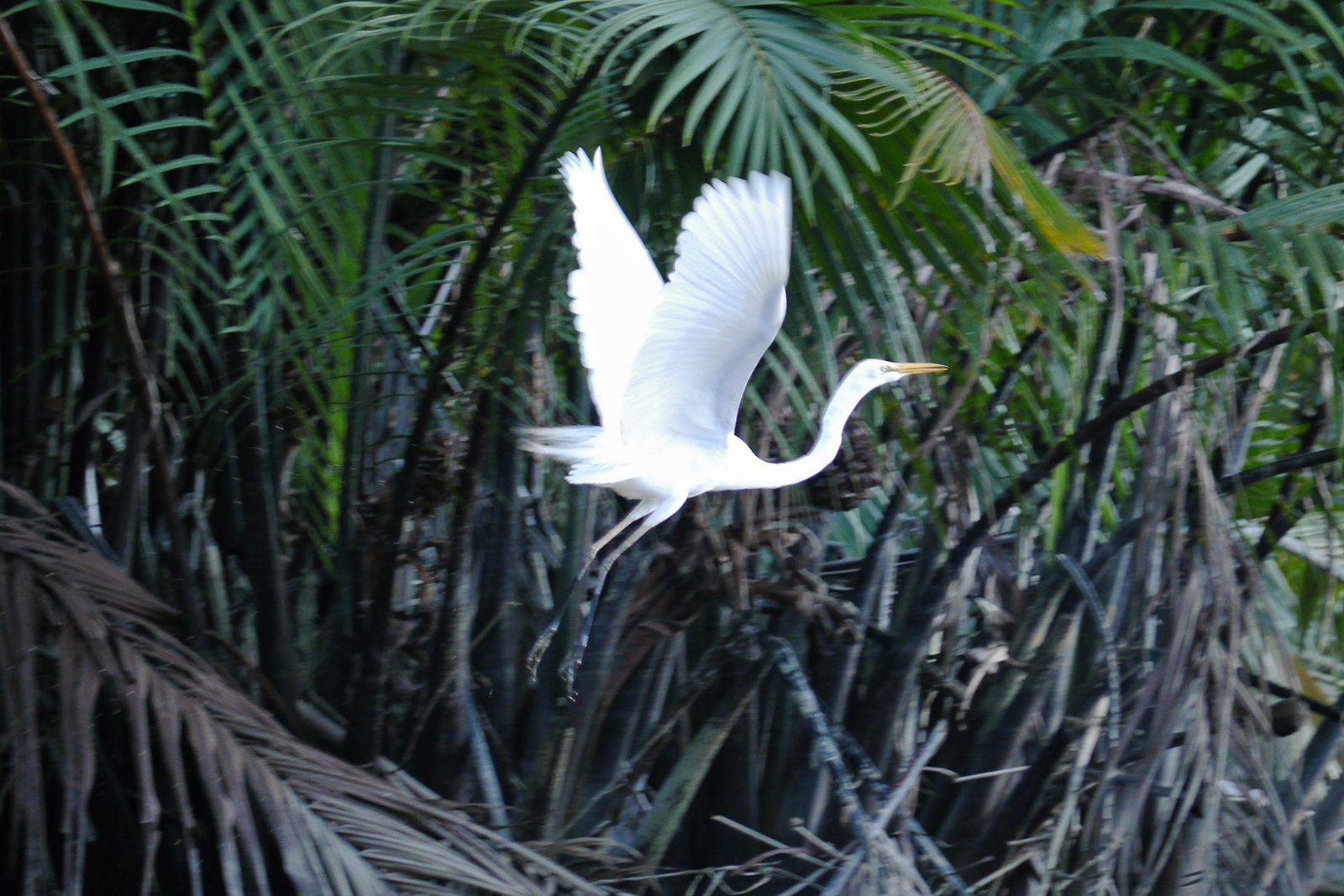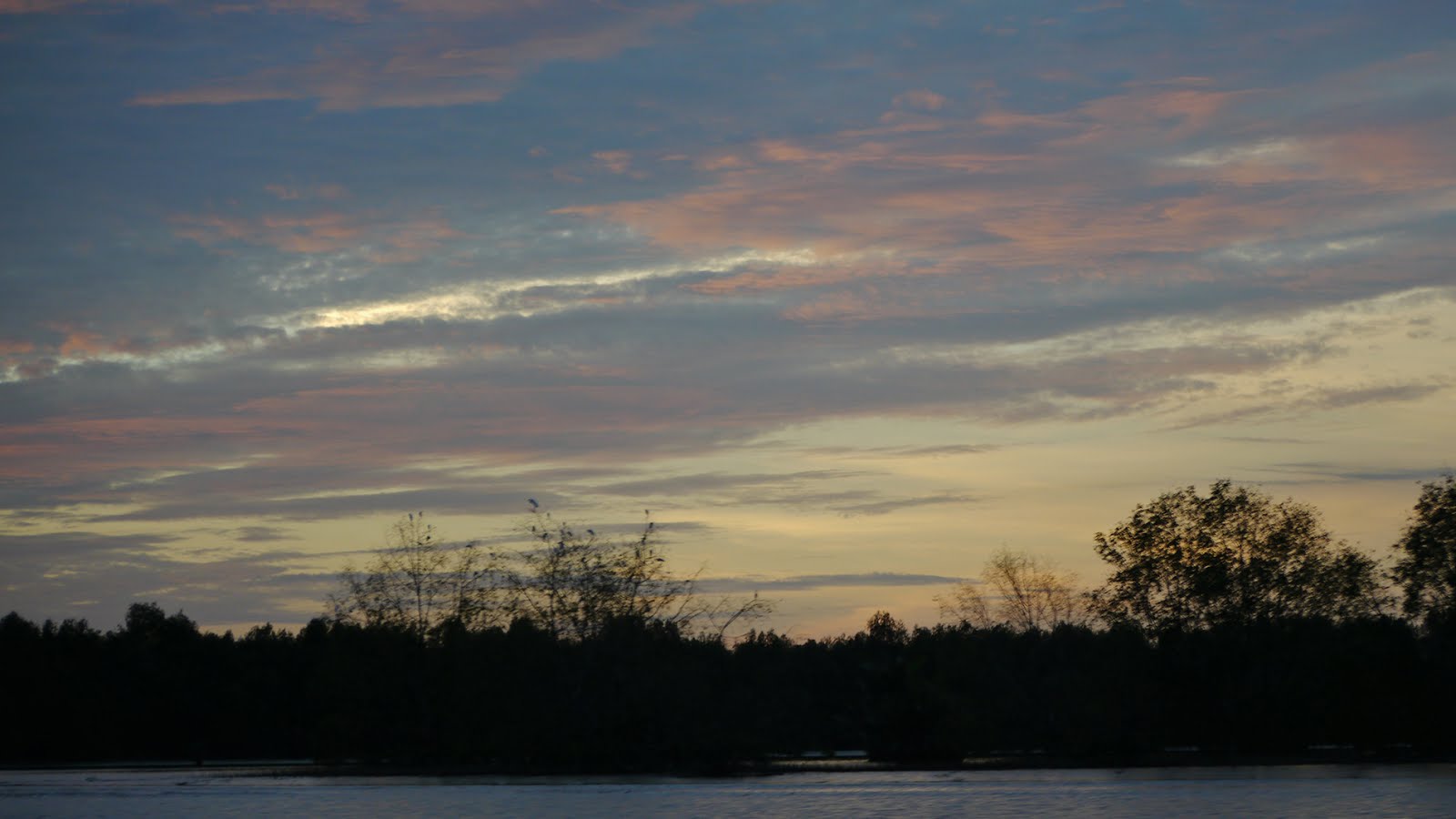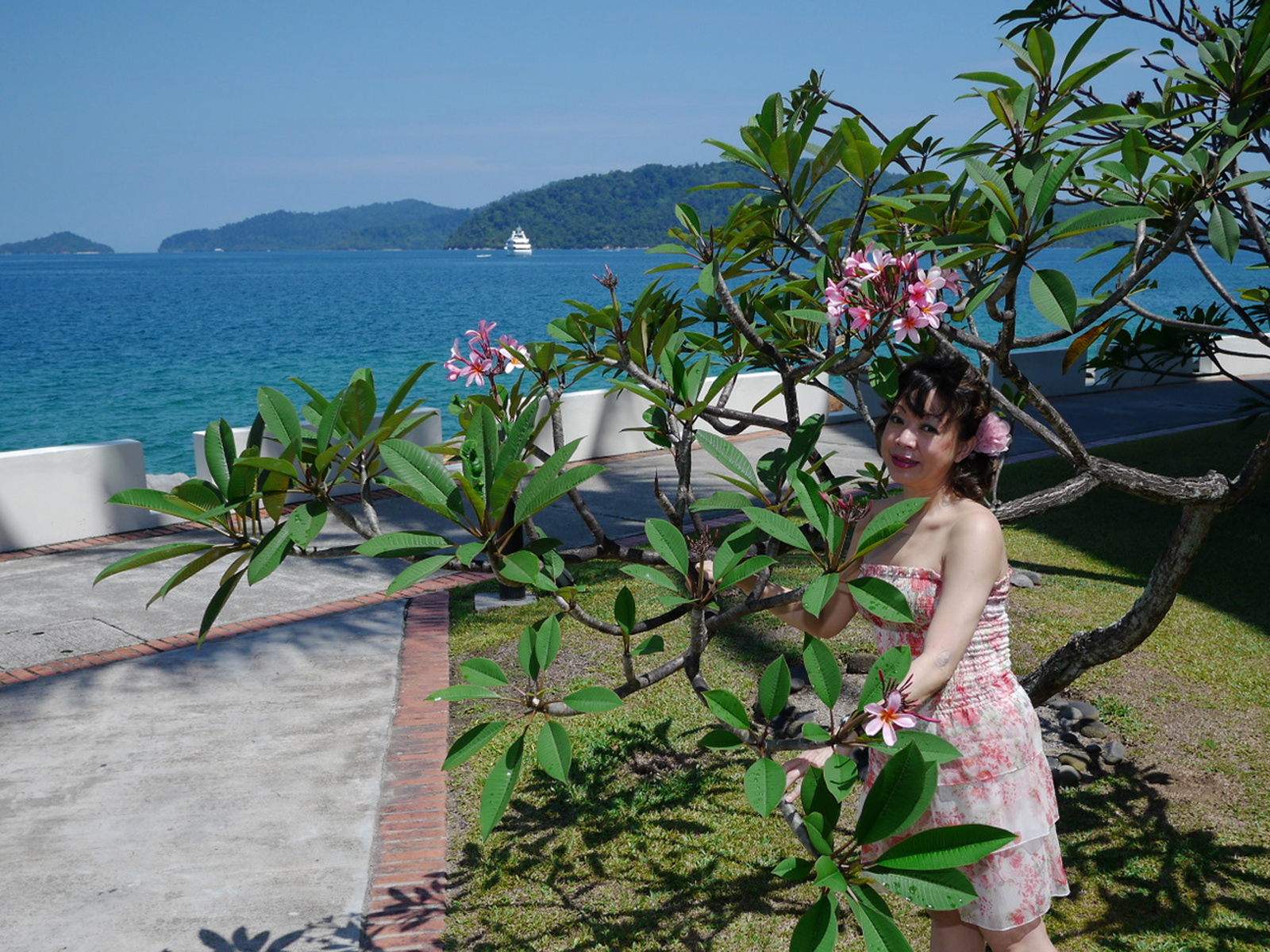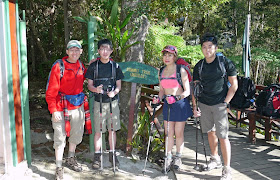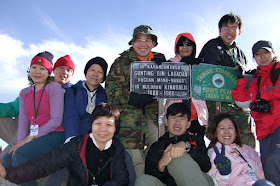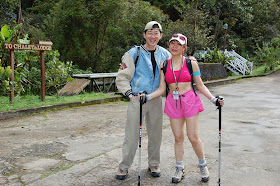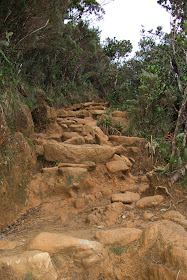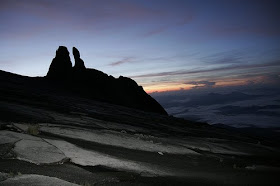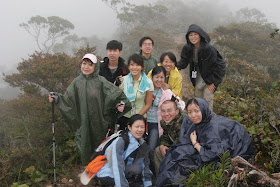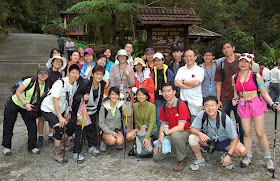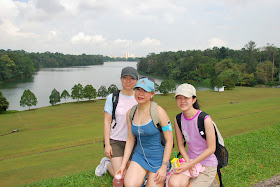If you think about it, Sabah & Kinabalu Park, a designated World Heritage site, encompass at least 4 different climatic zones. So the key phrase is "Dress in Layers".
Here's what my wife advises :
"On the lower slopes, you can actually feel hot if you're wearing trousers & long-sleeves plus carrying your backpack (see her breezy aerobics gear early on the Mesilau Trail). From Laban Rata to the summit, I basically wore a high-tech wind-cheating pair of hiking trousers (Arc'teryx) and thermal long-sleeved top (Marmot), with my spare aerobics gear underneath & wind-breaker outside."
Another truism about mountain-climbing is the fact that the weather changes ever so swiftly. You may start off with clear, blue skies first thing in the morning, but by the afternoon, the clouds may suddenly gather & rain on you by 3 or 4 pm.
Remember, as a dermatologist, I always throw in my best advice as :
"Slip, slop, slap" just as the Australians do, to protect against sunburn. Slip on a shirt, slop on sunscreen and slap on a hat. Plus "wrap" a pair of sunglasses to protect your eyes as well. There's also an oral supplement that is essentially an antioxidant which confers extra protection. It's called "Heliocare or polypodium leucotomos". Use it with a few caveats in mind - there's not enough data for its use in the young & in pregnancy and it's always prudent to check for drug interactions if one is on medications.
Remember that even on cloudy days, you can get burnt because UV rays still get through. Bad sunburns can induce painful blisters. And the damage from excessive sun exposure in the longterm is Premature Ageing of the Skin and Skin Cancer. You have been forewarned.
Another thing, on a mountain trek like Kinabalu, alpine hiking poles (like Leki) will ease the wear & tear on your knees. Waterproof, sturdy hiking shoes (like Columbia) will guard against ankle sprains & frostbite at the summit where wind chill temperatures can plummet below zero degrees Celsius!
Wednesday, July 2, 2008
Graphic Description of Terrain
My wife, who's been doing 16 years of regular weekly aerobics workouts, plus undergone 3 months of local training was physically prepared. However, the first time is always memorable. Here's her description of the arduous terrain in her own words :
"It's highly advisable that you go up by the longer (by 1.5km) but definitely more scenic Mesilau Trail. And descend by the faster but boring Timpohon Trail. Local training is mandatory (stair-climbing, hiking the forest into the dark with headlamps), your quadriceps must not give up on you. I found my Leki alpine hiking poles very helpful for the hike up to Laban Rata."
"The steps are HUGE, all the way to Laban Rata. Layang-Layang, where the 2 trails meet, to Laban Rata is steep & tough, & you're doing this at the end of the first day. On the final summit morning, leave the poles at Laban Rata cos you'll be navigating staircases, pulling yourself up with ropes over stretches of granite rockface. Most dangerous is Panar Laban Rockface. Especially at night when you can't appreciate the slope. Do NOT let go of the rope at this point." (My wife pulled her right groin muscle at this stage since she's so petite)
"After Sayat-Sayat Hut, you face multiple Ridges before you can even see the summit. The air is thin & the going gets tougher. At this stage, it's mind-over-matter. If anyone can reach this far, he/she should be able to finish the climb physically but some people give up mentally at this point."
"It's highly advisable that you go up by the longer (by 1.5km) but definitely more scenic Mesilau Trail. And descend by the faster but boring Timpohon Trail. Local training is mandatory (stair-climbing, hiking the forest into the dark with headlamps), your quadriceps must not give up on you. I found my Leki alpine hiking poles very helpful for the hike up to Laban Rata."
"The steps are HUGE, all the way to Laban Rata. Layang-Layang, where the 2 trails meet, to Laban Rata is steep & tough, & you're doing this at the end of the first day. On the final summit morning, leave the poles at Laban Rata cos you'll be navigating staircases, pulling yourself up with ropes over stretches of granite rockface. Most dangerous is Panar Laban Rockface. Especially at night when you can't appreciate the slope. Do NOT let go of the rope at this point." (My wife pulled her right groin muscle at this stage since she's so petite)
"After Sayat-Sayat Hut, you face multiple Ridges before you can even see the summit. The air is thin & the going gets tougher. At this stage, it's mind-over-matter. If anyone can reach this far, he/she should be able to finish the climb physically but some people give up mentally at this point."
Tuesday, July 1, 2008
Acute Mountain Sickness or AMS
AMS can be mild to life-threatening. Basically the lack of oxygen at high altitudes ( usually above 8000 feet) & capillary blood vessel leakage lead to fluid build-up in the brain & lungs. Thus, the symptoms are headache & shortness of breath respectively. Once the person experiences nausea, vomiting & unsteady gait, AMS is serious enough to demand an immediate rest & possible return to a lower altitude. This was what happened to one of the young people on our expedition.
This is one medical condition that you cannot predict 100% even if you are healthy. In past experience, AMS may actually befall fit, young men rather than older middle-aged women. Nevertheless, it is possible to take some sort of prophylaxis. These are just 3 of the common remedies :
This is one medical condition that you cannot predict 100% even if you are healthy. In past experience, AMS may actually befall fit, young men rather than older middle-aged women. Nevertheless, it is possible to take some sort of prophylaxis. These are just 3 of the common remedies :
- Aspirin or acetylsalicylic acid
- Diamox or acetazolamide
- Ginkgo biloba nuts
Medical Notes
A word of caution for would-be climbers :
The spirit may be willing but the flesh may really compromise the success of your climb.
Though you may prepare yourself mentally & physically, there's no denying the medical facts which may spell disaster even before the start of the expedition :
The spirit may be willing but the flesh may really compromise the success of your climb.
Though you may prepare yourself mentally & physically, there's no denying the medical facts which may spell disaster even before the start of the expedition :
- serious heart & lung diseases like emphysema
- serious brain / middle ear conditions like stroke & imbalance
- certain muscle / nerve disorders like myasthenia gravis
- old orthopedic injuries to the spine & major joints
- poor vision & other visual disabilities
Subscribe to:
Posts (Atom)



